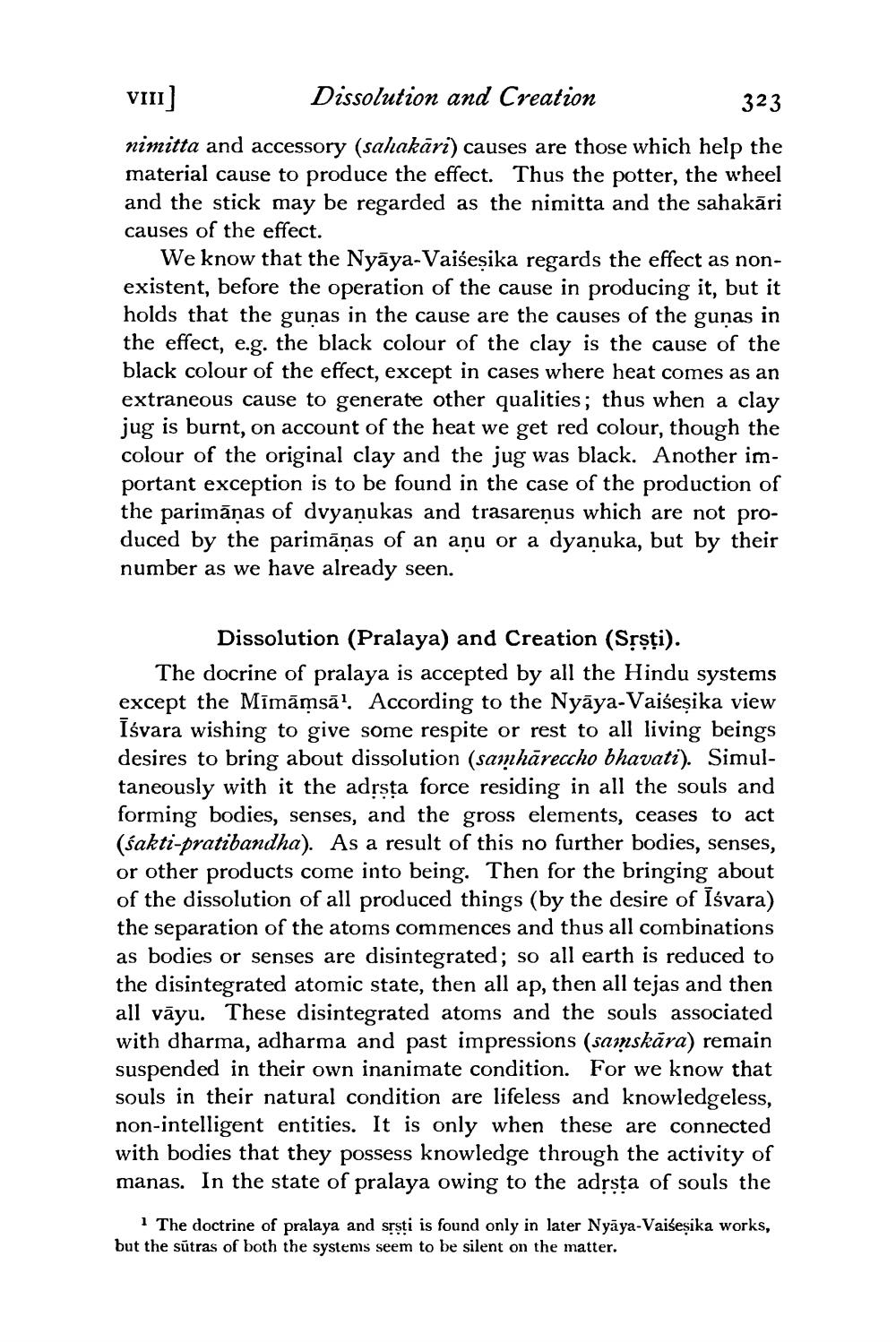________________
VIII]
Dissolution and Creation
323
nimitta and accessory (sahakāri) causes are those which help the material cause to produce the effect. Thus the potter, the wheel and the stick may be regarded as the nimitta and the sahakāri causes of the effect.
We know that the Nyaya-Vaiseṣika regards the effect as nonexistent, before the operation of the cause in producing it, but it holds that the gunas in the cause are the causes of the gunas in the effect, e.g. the black colour of the clay is the cause of the black colour of the effect, except in cases where heat comes as an extraneous cause to generate other qualities; thus when a clay jug is burnt, on account of the heat we get red colour, though the colour of the original clay and the jug was black. Another important exception is to be found in the case of the production of the parimāṇas of dvyanukas and trasareņus which are not produced by the parimāṇas of an anu or a dyanuka, but by their number as we have already seen.
Dissolution (Pralaya) and Creation (Sṛṣṭi).
The docrine of pralaya is accepted by all the Hindu systems except the Mimāmsā1. According to the Nyāya-Vaiseṣika view Iśvara wishing to give some respite or rest to all living beings desires to bring about dissolution (samhareccho bhavati). Simultaneously with it the adṛṣṭa force residing in all the souls and forming bodies, senses, and the gross elements, ceases to act (sakti-pratibandha). As a result of this no further bodies, senses, or other products come into being. Then for the bringing about of the dissolution of all produced things (by the desire of Īśvara) the separation of the atoms commences and thus all combinations as bodies or senses are disintegrated; so all earth is reduced to the disintegrated atomic state, then all ap, then all tejas and then all vayu. These disintegrated atoms and the souls associated with dharma, adharma and past impressions (samskāra) remain suspended in their own inanimate condition. For we know that souls in their natural condition are lifeless and knowledgeless, non-intelligent entities. It is only when these are connected with bodies that they possess knowledge through the activity of manas. In the state of pralaya owing to the adṛṣṭa of souls the
1 The doctrine of pralaya and srsti is found only in later Nyāya-Vaiśeṣika works, but the sutras of both the systems seem to be silent on the matter.




